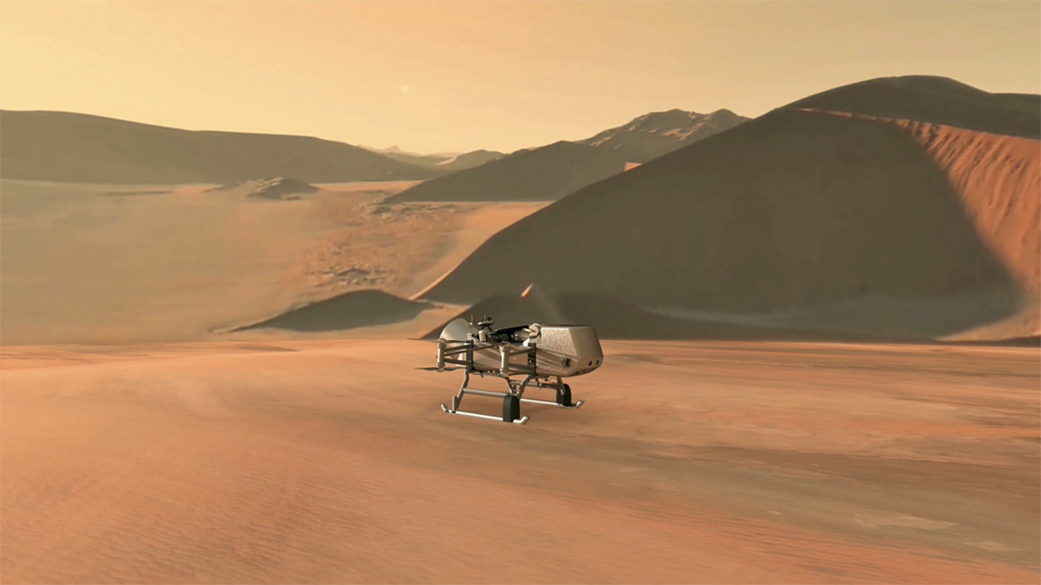NASA’s next destination in the solar system is the unique, richly organic world Titan. Advancing our search for the building blocks of life, the Dragonfly mission will fly multiple sorties to sample and examine sites around Saturn’s icy moon.
Dragonfly is slated to launch in 2026 and arrive in 2034. The rotorcraft will fly to dozens of promising locations on Titan looking for prebiotic chemical processes common on both Titan and Earth. Dragonfly marks the first time NASA will fly a multi-rotor vehicle for science on another planet; it has eight rotors and flies like a large drone. It will take advantage of Titan’s dense atmosphere – four times denser than Earth’s – to become the first vehicle ever to fly its entire science payload to new places for repeatable and targeted access to surface materials.
Titan is an analog to the very early Earth, and can provide clues to how life may have arisen on our planet. During its 2.7-year baseline mission, Dragonfly will explore diverse environments from organic dunes to the floor of an impact crater where liquid water and complex organic materials key to life once existed together for possibly tens of thousands of years. Its instruments will study how far prebiotic chemistry may have progressed. They also will investigate the moon’s atmospheric and surface properties and its subsurface ocean and liquid reservoirs. Additionally, instruments will search for chemical evidence of past or extant life.
Image Credit: NASA/JHU-APL
NASA在太阳系的下一个目的地是独特的、丰富的有机土卫六。为了推进我们对生命基石的探索,蜻蜓任务将进行多次出动,对土星冰冷的卫星周围的地点进行取样和检查。
蜻蜓计划于2026年发射升空,并于2034年到达。旋翼飞机将飞往泰坦上许多有希望的地点,以寻找土卫六和地球上常见的生物起源前的化学过程。蜻蜓标志着NASA首次在另一行星上飞行多旋翼飞行器以进行科学研究。它有八个旋翼,像大型无人机一样飞行。它将利用土卫六的稠密大气层(比地球密度高四倍)来成为有史以来第一架将其全部科学有效载荷飞行到新地方以可重复和有针对性地获取地面材料的运载工具。
土卫六是早期地球的一个类似物,它可以提供生命如何在地球上出现的线索。在历时2.7年的基线任务中,“蜻蜓”号将探索不同的环境,从有机沙丘到陨石坑的底部,液态水和复杂的有机物质曾经是生命的关键,它们曾经共存了数万年。它的仪器将研究生物起源前的化学的进展。他们还将研究卫星的大气和表面特性以及它的地下海洋和液体储藏库。此外,仪器将搜索过去或现存生命的化学证据。
来源:NASA/JHU-APL







